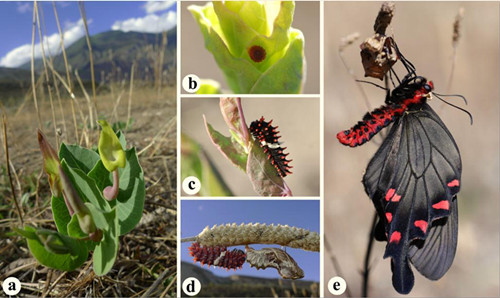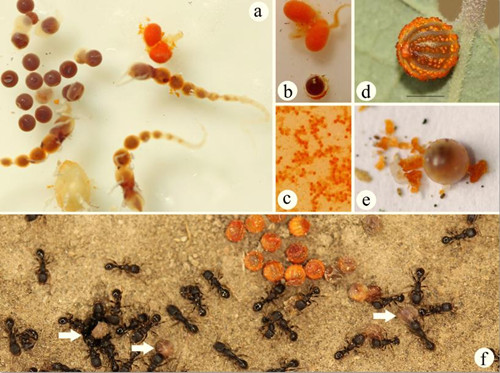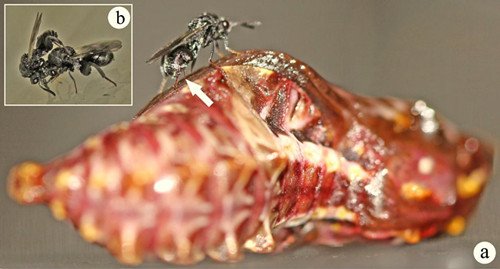Conservation Biology:中科院昆明植物所发表保护受威胁生态关系新
保护生物学领域经典期刊 Conservation BioLogy 上在线发表中国科学院昆明植物研究所孙卫邦研究组的陈高博士与该所骆世洪博士、昆明环保科普协会(“绿色昆明”)及香港社区合作伙伴合作的论文,题为“Case study of building of conservation coalitions to conserve ecological interactions”。
目前,生物多样性保护不仅仅是一个科学问题,更是一个社会和政治问题,如何协调利益相关方参与生物多样性保护是保护工作者值得认真思考的问题。然而,该方面的研究工作开展的并不多。
通过7年的努力,中国科学院昆明植物研究所孙卫邦研究组的陈高博士与该所骆世洪博士、昆明环保科普协会(“绿色昆明”)及香港社区合作伙伴合作,以川滇金沙江干热河谷特有的香料植物贯叶马兜铃(Aristolochia delavayi),及其特异的叶取食者达摩麝凤蝶(Byasa daemonius)幼虫及达摩麝凤蝶幼虫的寄生蜂(Hockeriasp.;拟发表的新种)为研究材料。以科学的态度,通过多方合作,结合传粉生态学、化学生态学、民族植物学、自然教育及社区参与等方法,探索了如何保护濒危的贯叶马兜铃和易危的达摩麝凤蝶及它们受威胁的生态关系。
研究者研究了达摩麝凤蝶幼虫对贯叶马兜铃植物叶片中马兜铃酸的选择性吸收和转化、探索了传粉者限制对贯叶马兜铃结实率的影响、揭示了寄生蜂对达摩麝凤蝶预蛹释放特殊气味的选择性识别、分析了马兜铃酸对蚂蚁,鸟及鸡的趋避效果。此外,非政府组织的参与有效地在科研和公众之间架起了桥梁。而社区参与物种长期的监测与保护促进了达摩麝凤蝶及寄主植物贯叶马兜铃在其自然居群内的更新和恢复。在没有人为干扰的情况下,贯叶马兜铃、达摩麝凤蝶、寄生蜂能动态共存。人工繁殖或自然居群的增强性密植反而促进达摩麝凤蝶幼虫的大爆发,从而导致蝴蝶及植物种群均受到损害。
通过社区参与保护,科研人员作为协作者而不是主导者同社区居民共同经历了7年的保护过程。该研究在当地营造了 “我为家乡而自豪”的情感,也促使自然保育工作者更加深刻地理解知识、意识和行为的相互关系,恰如黑猩猩保护者珍妮-古道尔博士所说的那样:“唯有了解,我们才会关心;唯有关心,我们才会行动,唯有行动,生命才有希望”。通过研究贯叶马兜铃、达摩麝凤蝶、寄生蜂的关系,希望让更多的人认识到,一旦这两个美丽的物种在地球上永久消失,人类损失的不只是目前已知的可用资源,还有两者身上潜在的利用价值,以及天地万物间息息相关的智慧。
通过多年的尝试,研究人员认为保护的最终效果应该是这样的描述:“某某好东西从古至今一直有,现在想看到它们也不难”。
此外,中国药典已经剔除马兜铃属植物作为中药材的使用(马兜铃酸容易导致肾衰竭或尿毒症)。然而,半结构式访谈表明当地居民常年食用贯叶马兜铃并没有明显的流行性肾病记录。但该植物对社区居民潜在的生态健康风险值得警惕。研究有益于促进其他受威胁的动植物及其相互作用生态关系的保护。

贯叶马兜铃(Aristolochia delavayi)及其特异取食者达摩麝凤(Byasa daemonius)的不同生活史阶段

贯叶马兜铃的雌花期、雄花期及其特异传粉者——毛蠓(Dasyhelea sp.)

达摩麝凤蝶卵壳上马兜铃酸I, II的差异性分布及其化学防御

寄生蜂Hockeria sp.产卵于达摩麝凤蝶的预蛹上
原文链接:
Case study of building of conservation coalitions to conserve ecological interactions
原文摘要:
We engaged experts in various fields of study (pollination ecology, chemical ecology, and ethnobotany), invited community participation, and provided environmental education in an effort to conserve an endangered birthwort (Aristolochia delavayi) and a vulnerable pipevine swallowtail (Byasa daemonius). scientists studied the uptake and sequestration of the secondary metabolites aristolochic acids from A. delavayi leaves by different stages of pipevine swallowtail as a defense mechanism; low fruit set of the myophilous A. delavayi due to pollinator limitation; and the emission of chemical signals that attract parasitic wasps by the prepupae of B. daemonius. The results of these studies were part of an education program delivered by personnel of non-governmental organizations. The program was devised to deliver information to the public about the health risks of consuming A. delavayi individuals (aristolochic-acid-associated cancers) and to establish a bridge between the public and scientific research. Following delivery of the program, the behavior of residents changed considerably. Community residents were involved in management activities, including participation in a program to promote understanding of ecological interactions between A. delavayi and B. daemonius; designing an in situ conservation site; monitoring A. delavayi and B. daemonius individuals; and promoting the natural fruit set of A. delavayi by scattering animal excrement to attract fly pollinators. The integration of scientific information and community participation appears to have resulted in an increase in abundance of threatened A. delavayi and B. daemonius populations. We believe the involvement of local people in conservation is necessary for successful species conservation.
DOI: 10.1111/cobi.12583
作者:孙卫邦

